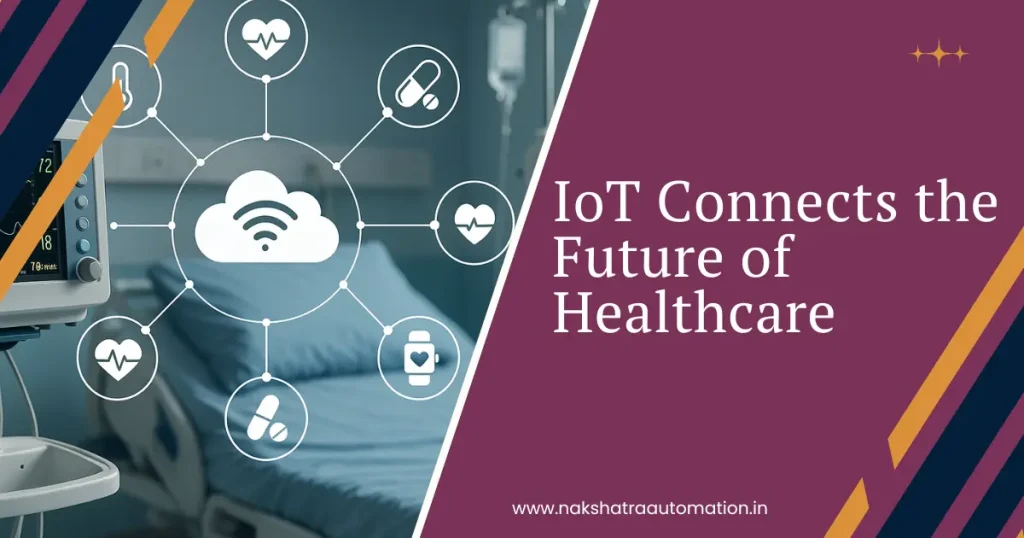
What Is IoT-Based Medical Equipment?
In recent years, the healthcare industry has experienced rapid digital transformation. Among all the innovations—from electronic health records to telemedicine—IoT-powered medical equipment is reshaping the foundation of modern healthcare. These connected systems offer real-time insights, improve patient safety, enable remote care, and optimize hospital efficiency like never before.
IoT-based medical equipment refers to devices embedded with sensors, software, and internet connectivity that can:
- Collect physiological data such as heart rate, oxygen saturation, or glucose levels.
- Transmit data securely over wireless networks (Wi-Fi, Bluetooth, 4G/5G).
- Integrate with hospital dashboards, cloud storage, and electronic health records (EHRs).
- Enable automated alerts, real-time monitoring, and predictive analytics for early intervention.
In essence, these devices give medical infrastructure a digital nervous system—enabling communication between patients, providers, and machines for proactive care delivery.
How It Works: The Connected Workflow
IoT-enabled medical devices follow a well-defined, intelligent workflow:
- Data Collection: Embedded sensors monitor vital parameters continuously (e.g., ECG for heart rhythm, glucometers for blood sugar).
- Secure Connectivity: Data is encrypted and sent via wireless protocols to cloud platforms or local systems.
- Smart Analysis: Software platforms analyze data using AI to detect anomalies or clinical patterns.
- Real-Time Alerts: If predefined thresholds are breached, automatic alerts are sent to caregivers, doctors, or patients.
- System Integration: The collected data syncs with EHRs, allowing medical teams to act promptly from any location.
Real-World Applications of IoT-Based Medical Equipment
Here are several impactful ways IoT is reshaping healthcare:
1. Remote Patient Monitoring Devices
- ECG wearables: Monitor heart irregularities and notify cardiologists in real time.
- Pulse oximeters: Track oxygen saturation—essential for post-COVID or respiratory care.
- Glucometers & BP Monitors: Automatically update cloud records and help physicians adjust treatment remotely.
2. Smart Infusion Pumps
These devices:
- Adjust medication doses automatically.
- Notify healthcare teams of flow irregularities.
- Store data logs for compliance and audits.
3. Connected Ventilators
IoT-powered ventilators:
- Share live respiratory data with specialists.
- Optimize ventilator settings based on patient response trends.
- Enable virtual supervision and reduce physical intervention needs.
4. Smart Hospital Beds
These beds can:
- Detect weight shifts or fluid retention.
- Prevent pressure ulcers with automated movement alerts.
- Sync patient activity with nurse call systems and EHRs.
5. Wearable Clinical Devices
Beyond fitness, wearables now support:
- Atrial fibrillation detection.
- Post-operative recovery tracking.
- Sleep monitoring for diagnostics.
6. Point-of-Care Diagnostics
These devices:
- Deliver quick results for infections (like strep or COVID-19).
- Upload findings instantly to hospital systems.
- Accelerate treatment decisions and reduce lab delays.
7. IoT-Powered Telemedicine Kits
These include:
- Digital stethoscopes, otoscopes, and HD cameras.
- Vitals monitoring tools integrated with mobile apps.
- Empower patients to participate in virtual consultations from home.
Key Benefits of IoT in Healthcare
Hospitals, clinics, and remote facilities are investing in IoT devices due to several compelling benefits:
- 24/7 Monitoring without human error
- Faster Detection of complications using AI-driven alerts
- Enhanced Remote Care, especially in underserved or rural areas
- Streamlined Workflows through automatic data logging
- Cost Reductions from fewer hospital visits and emergency readmissions
- Personalized Care Plans based on data insights
Challenges and Considerations
Despite the value, adopting IoT in healthcare must overcome a few hurdles:
- Cybersecurity: Data privacy must comply with HIPAA or global standards.
- Interoperability: Device compatibility across brands remains a concern.
- Reliability: Devices must function seamlessly even during connectivity drops.
- User Training: Both medical staff and patients need proper onboarding.
- Initial Cost: While ROI is strong, the upfront infrastructure investment can be significant.
Looking Ahead: AI + IoT in Healthcare
The next leap will combine IoT with artificial intelligence for:
- Predictive maintenance of devices
- Personalized treatment algorithms
- AI-assisted remote diagnostics
- Virtual assistants for chronic care support
With the rollout of 5G and cloud-based EHRs, data transfer will be faster and more secure, unlocking the full potential of smart medical systems.
Empowering the Connected Care Ecosystem
IoT-based medical equipment represents more than a technological upgrade—it’s a paradigm shift in how healthcare is delivered. From reducing hospital strain to empowering patients at home, IoT brings precision, speed, and personalization to clinical care.
As medical institutions move toward this connected future, it’s essential to partner with the right automation and integration experts. Companies like Nakshatra Automation are enabling healthcare providers to embrace IoT-driven innovation with scalable, secure, and tailored solutions that align with tomorrow’s care standards.
Step into the future of connected care. Get-in touch with Nakshatra Automation to implement IoT-powered medical solutions for smarter, safer, and personalized healthcare.

